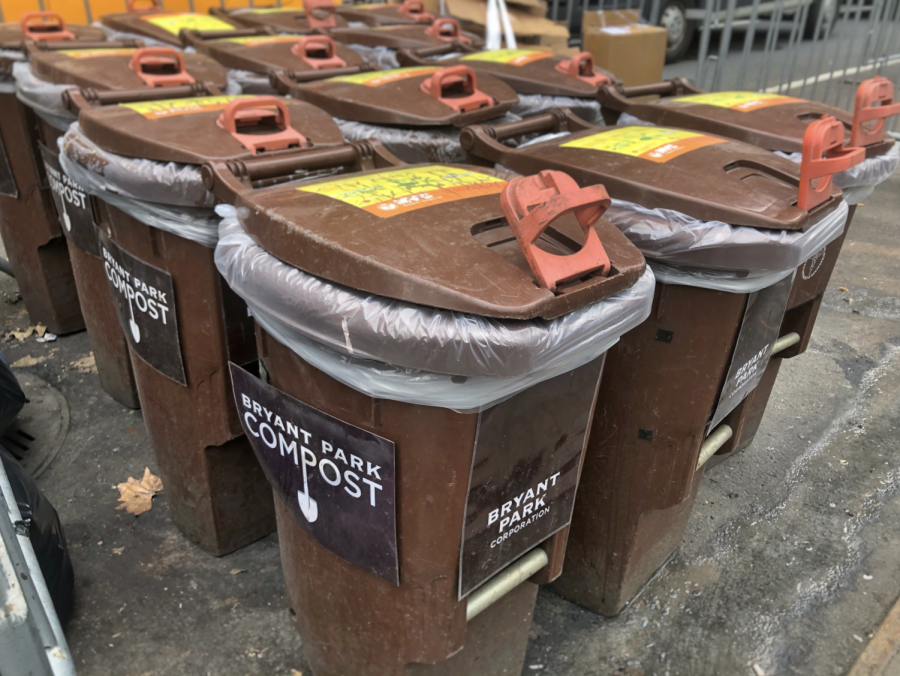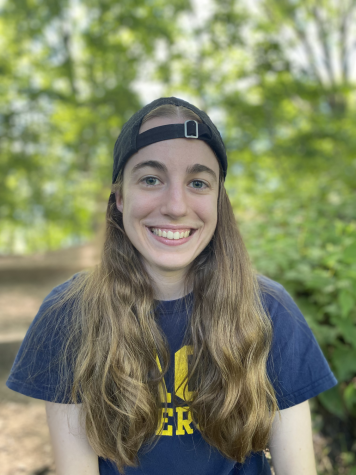Curbside composting comes to Queens
October 20, 2022
New York City is once again trying its hand at curbside composting for residents. The Department of Sanitation announced that they would be restarting a composting program throughout the entire borough of Queens for an estimated 2.2 million residents.
The program kicked off on Oct. 3 and will continue through December, where it will take a break until March due to a decrease in yard waste in the winter. Sanitation workers will pick up the compost one day a week on the same day they collect recyclables. They have already distributed small brown bins all over the borough which look like regular trash bins but are smaller and marked specifically for compost. If residents have not ordered a brown bin, they can also use their own bins if they provide the proper labels. All residents can participate in this program, as all residential buildings including all houses and apartments will receive this service.
This program has the goal of reducing NYC waste and of repurposing food and other items that would otherwise end up in landfill. According to Sanitation Commissioner Jessica Tisch, one-third of all the trash and recycling collected from NYC residents each day is organic matter, an estimated 10 billion tons, which can be converted back into organic material for the Earth. The compost that is taken from these bins will be taken to a compost center in Staten Island and will then be given back to community gardens around the city as plant food.
Though improving climate change is the biggest benefit of this program, people are also looking forward to the positive impacts on street cleanliness, which has come under scrutiny in recent years as garbage on New York streets has significantly increased. Residents are also hoping this will decrease the rodent population throughout the city.
In the past, curbside composting was available in parts of NYC as part of an initiative from Mayor Eric Adams, but the program was stopped when the marginal cost of the infrastructure outweighed the marginal benefit of residential participation. When the program came back, people could only participate if they opted into the program, which currently exists only in certain neighborhoods in Manhattan, Brooklyn and the Bronx. Anyone could have opted into this program, but for buildings with more than 10 units, residents needed approval from the building management to opt in.
This new program is different. This is the first initiative to get curbside composting for a whole borough. There are also no forms or applications to fill out for this service, which makes it more convenient for a wider range of people. Adam’s administration is hoping that by making composting easy and accessible for residents, more people will be inclined to participate this time compared to last time.
Residents can compost all yard waste, such as leaves and stick, and all food scraps, including meat, bones, dairy, take-out and paper products that have been contaminated with food waste such as pizza boxes. People are not allowed to compost any materials that can be recycled, including select plastic, cardboard and glass.
This program is a significant improvement for the city, and the country, in terms of curbside composting, but many in the city are still not able to access this service easily. Many people throughout New York are excited about this program, but it is currently only available for 2.2 million out of the 8.4 million people living in NYC.













madeline • Feb 8, 2023 at 8:32 pm
you know, say what you will about Emily shafer… when the woman writes an Article, that’s with a capital A. I love reading this because even though it is completely factual, no opinion, I hear her stance through the voice. and it is seething. first line, last line… WOOOOOOF.